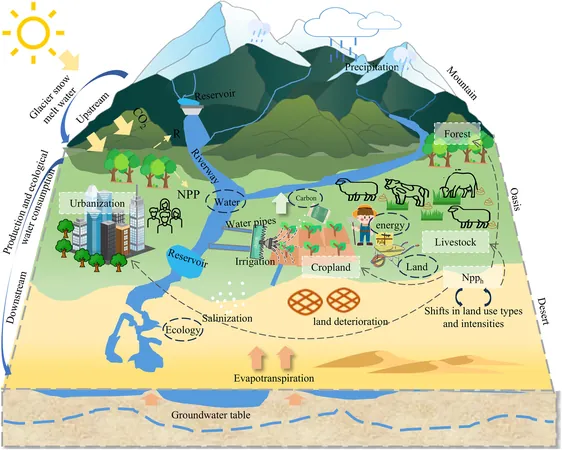
Revolutionizing Urban Mapping: New Insights on Machine Learning Tools
2025-06-17
Author: Sarah
Unlocking Urban Growth Insights with Deep Learning
In a groundbreaking new study, experts tackle the intricate challenge of urban footprint mapping, a vital tool for shaping sustainable cities. Analyzing the expansion of cities through high-resolution satellite imagery, the research compares multiple machine learning and deep learning algorithms to identify the most effective methods for extracting urban footprints.
The Limits of Traditional Mapping Techniques
As urban centers grow denser and more complex, outdated tools for land-use monitoring are proving inadequate. The concept of 'urban footprint' now encompasses not just buildings, but also green spaces, reflecting the environmental quality and livability of city life. However, existing techniques often struggle with complications like building shadows, the similarity in spectra between natural and built environments, and irregular development patterns.
A Comprehensive Global Study
Conducted by researchers from the University of Aberdeen, the study featured a comprehensive evaluation of urban footprint extraction algorithms using PlanetScope’s high-resolution images from eight cities across the globe—from tightly packed historical centers to sprawling informal settlements. The researchers tested various methods, including traditional pixel-based techniques and advanced deep learning models.
Results Showcase a Mixed Performance Landscape
The results revealed a complex performance landscape influenced by urban structure and algorithm design. Traditional pixel-based methods like K-means and Support Vector Machines performed well in straightforward city layouts but faltered in high-rise districts. Object-based methods showed improvement through texture analysis, but their effectiveness depended heavily on the chosen classifier.
Deep learning methods, particularly the U-Net and DeeplabV3 models, achieved remarkable accuracy, often surpassing 90%. While U-Net captured fine urban details magnificently, DeeplabV3 excelled in large, chaotic urban landscapes. However, these models required substantial computational resources. The innovative Segment Anything Model (SAM), while user-friendly and efficient, struggled in fragmented urban settings.
Personalized Algorithms for Urban Landscapes
According to lead author Baoling Gui, a PhD candidate specializing in remote sensing and urban geography, the study emphasizes that 'one size does not fit all' in urban mapping. The research highlights how city layout, density, and green space integration significantly impact algorithm performance. While deep learning techniques deliver unparalleled precision, they often come with higher costs. SAM, however, offers a pragmatic compromise.
Impacts on Urban Planning and Policy Making
The implications of this research stretch far beyond academic circles. City planners, policymakers, and geospatial analysts can leverage these insights to create robust urban monitoring systems that track growth and manage environmental challenges. As cities across the globe strive for sustainability and resilience, accurate urban footprint mapping is becoming indispensable.
Moreover, the fusion of object-based methods with deep learning could pave the way for hybrid models that deliver high performance combined with greater flexibility across varied urban landscapes. The future of urban mapping is here, and it promises to transform how we understand and interact with the urban environments of tomorrow.





 Brasil (PT)
Brasil (PT)
 Canada (EN)
Canada (EN)
 Chile (ES)
Chile (ES)
 Česko (CS)
Česko (CS)
 대한민국 (KO)
대한민국 (KO)
 España (ES)
España (ES)
 France (FR)
France (FR)
 Hong Kong (EN)
Hong Kong (EN)
 Italia (IT)
Italia (IT)
 日本 (JA)
日本 (JA)
 Magyarország (HU)
Magyarország (HU)
 Norge (NO)
Norge (NO)
 Polska (PL)
Polska (PL)
 Schweiz (DE)
Schweiz (DE)
 Singapore (EN)
Singapore (EN)
 Sverige (SV)
Sverige (SV)
 Suomi (FI)
Suomi (FI)
 Türkiye (TR)
Türkiye (TR)
 الإمارات العربية المتحدة (AR)
الإمارات العربية المتحدة (AR)